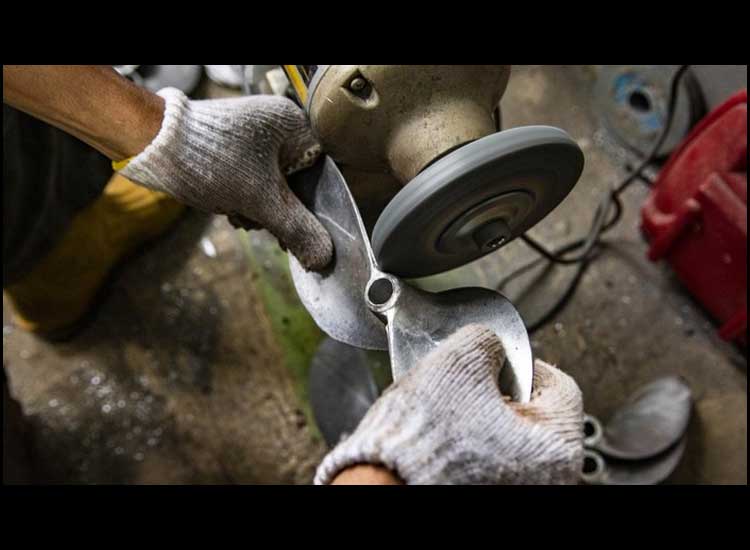History of Aluminum, Hans Christian Oersted’s ‘Miraculous’ Discovery – Jakarta – Aluminum is a type of metal that is widely used in the human life sector today. It can be said that aluminum is an important element supporting modern life.
How could it not be, the use of aluminum can be found in everything from transportation, building and construction, packaging, to technology.
Products resulting from aluminum metal processing may also be used by you right now, such as mobile phones, laptops, TVs, or cars. Beverage cans and glasses as a visual aid are also made of aluminum. So it can be said that now almost everyone uses aluminum every day.
However, who do you think discovered aluminum?
A Brief History of Aluminum
Aluminum metal was discovered by Hans Christian Oersted in 1825. To find out a brief history of the discovery of aluminum, see the following explanation reported from the Aluminum Leader page.
Periode Hans Christian Oersted
Aluminum, which is the most widely used metal today, was discovered by Danish chemist Hans Christian Oersted in 1825. He was the first person to successfully extract the pure form of aluminum from its ore (bauxite).
For information, bauxite or aluminum ore was first discovered by geologist Pierre Berthier in 1821. At that time, Pierre found reddish clay deposits in Les Baux, France. The rock was then named bauxite, taken from the name of the area where it was discovered.
Before Hans Christian Oersted succeeded in carrying out his experiment, an English chemist named Humphry Davy had tried it first.
In 1808, Humphry discovered that aluminum could be produced through electrolytic reduction of alumina (aluminum oxide). However, his experiment failed and he was unable to prove the theory.
It was not until 1825 that Hans succeeded in extracting aluminium from bauxite. He produced an aluminium alloy from the elements used in the experiment, not pure aluminium.
Hans’ efforts were then continued by Friedrich Woehler, a German chemist who initially worked on aluminum powder in 1827. After 18 years of experimenting, Friedrich succeeded in making small balls of solidified liquid aluminum (globules).
French chemist and technologist Henri-Etienne Sainte-Claire Deville transferred the chemical method of producing aluminum discovered by scientists to industrial applications.
He improved on Friedrich’s process and produced the first industrial aluminum with his colleagues at Charles and Alexandre Tissier’s production facility in Rouen, France in 1856.
The metal Henri produced resembled silver but was light and highly valued. So at that time, aluminum was considered an elite material intended for making ornaments and luxury goods and jewelry.
The medals made during the reign of Napoleon III are considered to be the first aluminum products ever created.
Charles Hall-Paul Héroult period
The development of aluminium changed when a more cost-effective electrolytic production method was discovered in 1886. This method involved the reduction of molten aluminium oxide in cryolite.
The electrolyte production method was independently developed by a French engineer Paul Héroult. At the same time, an American student named Charles Hall was also trying a similar method.
In 1888, the Swiss Metallurgical Society and Rathenau, a German industrialist, signed an agreement to establish the Aluminum Industrial Joint Stock Company in Neuhausen, Switzerland. Later, its name was changed to the Aluminum Smelter Society.
After that, aluminum production increased more than tenfold in five years. What was previously only 40 tons of aluminum melted in 1890 in Neuhausen, by 1895 was able to produce 450 tons.
On the other hand, Charles Hall founded the Pittsburgh Reduction Company (now known as Alcoa) in 1888. The first few months, the company only produced 20-25 kilograms of aluminum per day. But by 1890, production had increased to 240 kilograms per day.
Then in 1889, an Austrian chemist, Karl Joseph Bayer, discovered a cheap and feasible method of producing alumina or aluminum oxide. This alumina is the basic raw material for aluminum production.
Period Modern
After that, aluminum began to be used widely in many ways to create various new industries. Starting from making passenger ships, trains, cars, to airplanes.
Aluminum is also used to produce household appliances such as pans and pots to replace copper and cast iron that were previously used. In addition, this type of metal was also used for the production of aluminum foil for the first time in 1910.
In modern times, aluminum is used in a wider area. Where its use extends to the construction, building, and technology sectors.
The aluminium production process used today is known to be based on a method developed by Karl Joseph Bayer and Charles Hall-Paul Héroult.
In the book The Natural History by Pliny the Elder, it is said that humans had already discovered aluminum long before scientists tried to create aluminum.
In the book, it is said that a first-century craftsman presented a cup made of an unknown metal to Tiberius, the Roman Emperor.
The metal is said to look like silver, but is too light to be made into a piece of equipment. The metal is thought to be aluminum.
So, that’s a brief history of aluminum, a type of metal discovered by Hans Christian Oersted in 1825. Hopefully this information is helpful!





